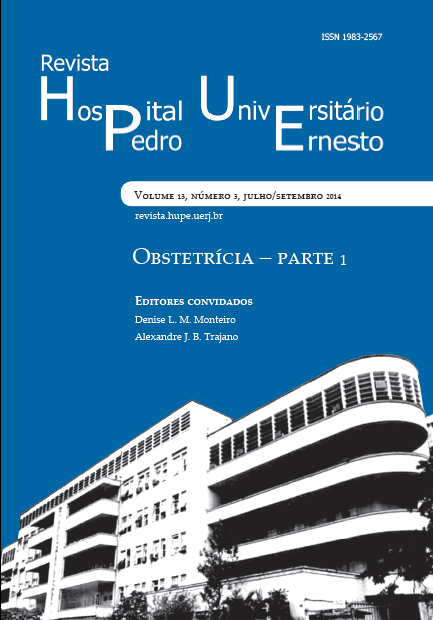Syphilis in pregnancy
DOI:
https://doi.org/10.12957/rhupe.2014.12133Abstract
Syphilis is caused by the Treponema pallidum and its mode of transmission is sexual, blood borne or from mother-to-child (vertical) throughout the pregnancy. According to the guidance of the Ministry of Health, serological screening and treatment are routinely offered to all pregnant women attending antenatal care, nevertheless rates of maternal morbidity, congenital infection and perinatal mortality remain high and the disease still represents a challenge for public health. The persistence of the high prevalence of congenital syphilis despite the targeted prevention programs is unsettling. This review aims to contribute to the spread of the current knowledge in our country and the elaboration of measures which can reduce vertical transmission and mother and child morbimortality. The prevalence of syphilis in pregnant women in Brazil is 1.6%. The Southeast region has the highest rate of congenital syphilis notification and the State of Rio de Janeiro has the highest incidence per live births (9.8/1,000), according to data of the Ministry of Health. The cost of preventing congenital syphilis, testing and therapy included, is lower than U$ 1.50 per person and the risk of mother-to-child transmission during pregnancy ranges from 70-100% in cases of recent syphilis to 30-40% in late syphilis. This review presents a discussion about the diagnosis and early treatment of syphilis in pregnancy, which can prevent unfavourable pregnancy outcomes for both mother and child when properly administered. A better understanding of the condition allows the search for improvement in public policies, collaborating to the reduction of the prevalence of syphilis and its complications in Brazil.Downloads
Published
2014-07-29
Issue
Section
Artigos


